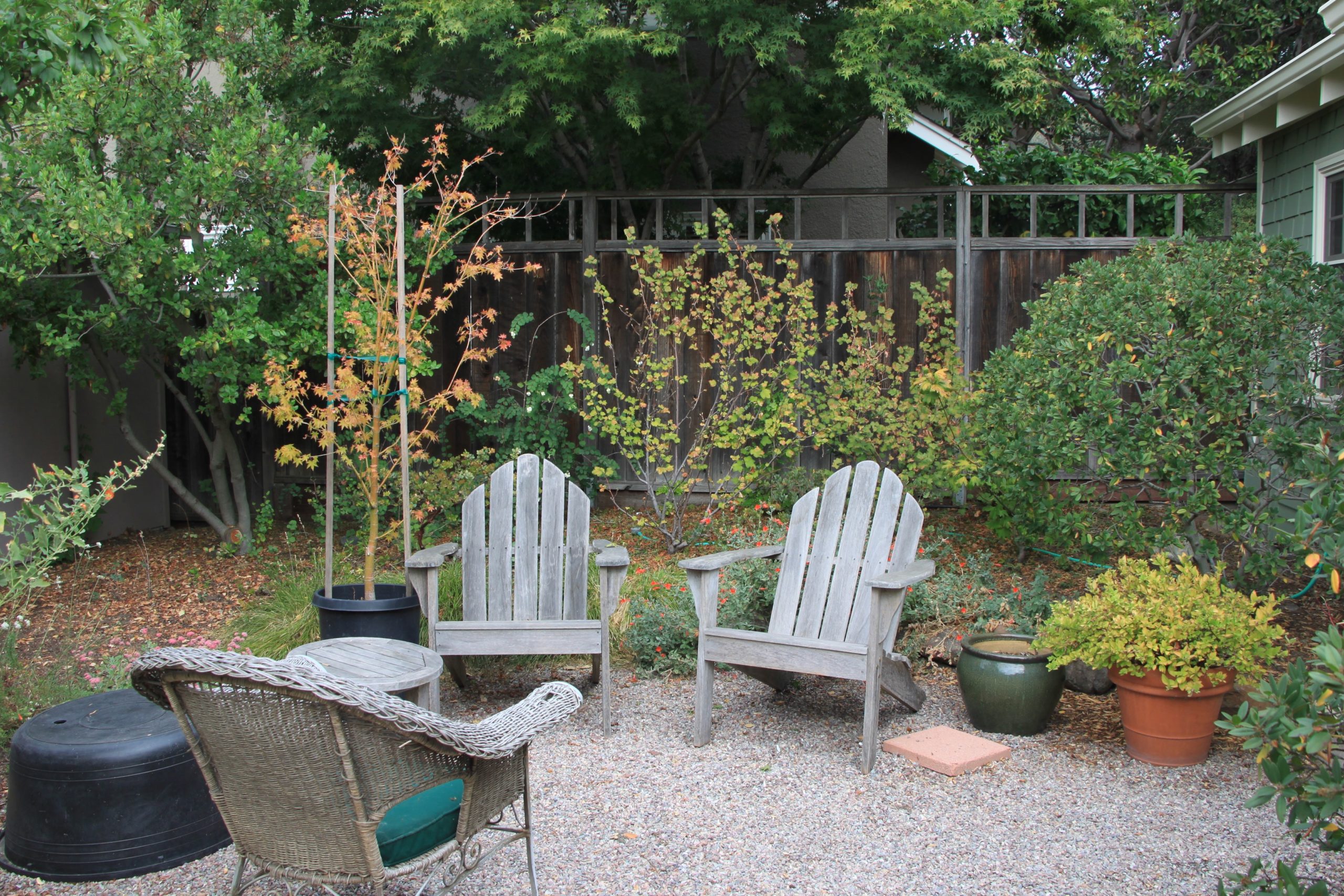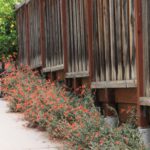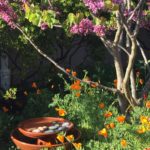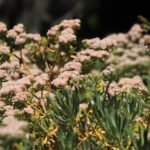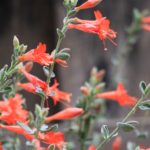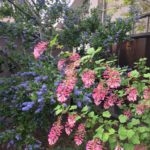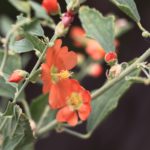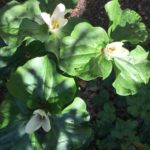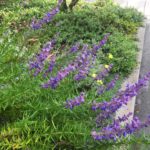Showcase Feature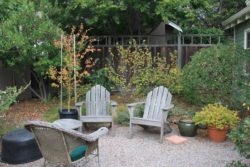
Long-time Tour-goer Julie Benson didn’t love the lawn and the accompanying retinue of non-native plants that came with the house; over the years they were replaced with a pleasing array of attractive, water-conserving native plants that attract birds, bees, and butterflies.
In the shady front garden moss rocks were used to create gentle terraces on the front slope; these terraces help to control erosion and keep rainwater on-site. In front of the house a delightful combination of upright and prostrate manzanitas mingle with rosy buckwheat, coral bells, and irises. Native strawberry groundcover keeps the garden green year-round. Currants, columbine, and iris flourish in the shady side garden.
The equally shady parking strip contains a potpourri of yarrow, with its delicate, fernlike leave and cream-colored flowers, lavender-blossoming and fragrant coyote mint, and blue-eyed grass, among other plants.
Fire engine red native fuchsia brighten the driveway garden bed, delighting hummingbirds and passers-by in from summer through fall.
A gorgeous Dr. Hurd manzanita graces the entrance to the back garden, which is a quiet retreat from nearby busy Park Blvd. A boulder-lined gravel path, bordered by Santa Cruz Island buckwheat, manzanitas, wooly blue curls, sages, and coffeeberry leads to a peaceful seating area at the back of the garden. Drop down in one of the Adirondack chairs and enjoy this tranquil haven; you won’t want to leave.
 Various designers have contributed to the development of this garden. The garden has evolved further as Julie’s knowledge of native plants increased over time, due in part, to what she has learned as a volunteer at the Tilden Regional Parks Botanic Garden, a 10-acre sanctuary that creates beautiful landscapes displaying California’s diverse plant life (free admission!).
Various designers have contributed to the development of this garden. The garden has evolved further as Julie’s knowledge of native plants increased over time, due in part, to what she has learned as a volunteer at the Tilden Regional Parks Botanic Garden, a 10-acre sanctuary that creates beautiful landscapes displaying California’s diverse plant life (free admission!).
Other Garden Attractions
• Persistent weeds are removed with… persistent hand-weeding. No pesticides are used in this—or any! Tour garden.
Gardening for Wildlife
Hummingbirds, Bewick’s wrens, thrushes, chickadees, towhees and flocks of goldfinches, as well as butterflies and native bees, visit this wildlife-friendly garden. The occasional Cooper’s hawk can be seen soaring overhead.
The birds and bees are attracted by bird bath (made by Julie’s husband), the sound of water splashing into the fountain, and the many flowering plants that have been thoughtfully included in this garden for them—the long, tubular flowers of the California fuchsia and penstemon draw in hummingbirds, and California lilac and manzanita are magnets for native bees.
Flowers are left on the plants to dry and go to seed, and hungry birds can be seen gleaning seeds well after the blossoms have gone. Towhees nested in the garden this year, and Bewick’s wrens have nested in the garden in the past.
Keystone species in this garden (watch this talk by Doug Tallamy!)
Keystone species—our own, local ecological powerhouse plants— in this garden include California lilac, manzanita, sage, buck wheat, redbud, and native strawberry.
Photos
Click to see as a slideshow:

